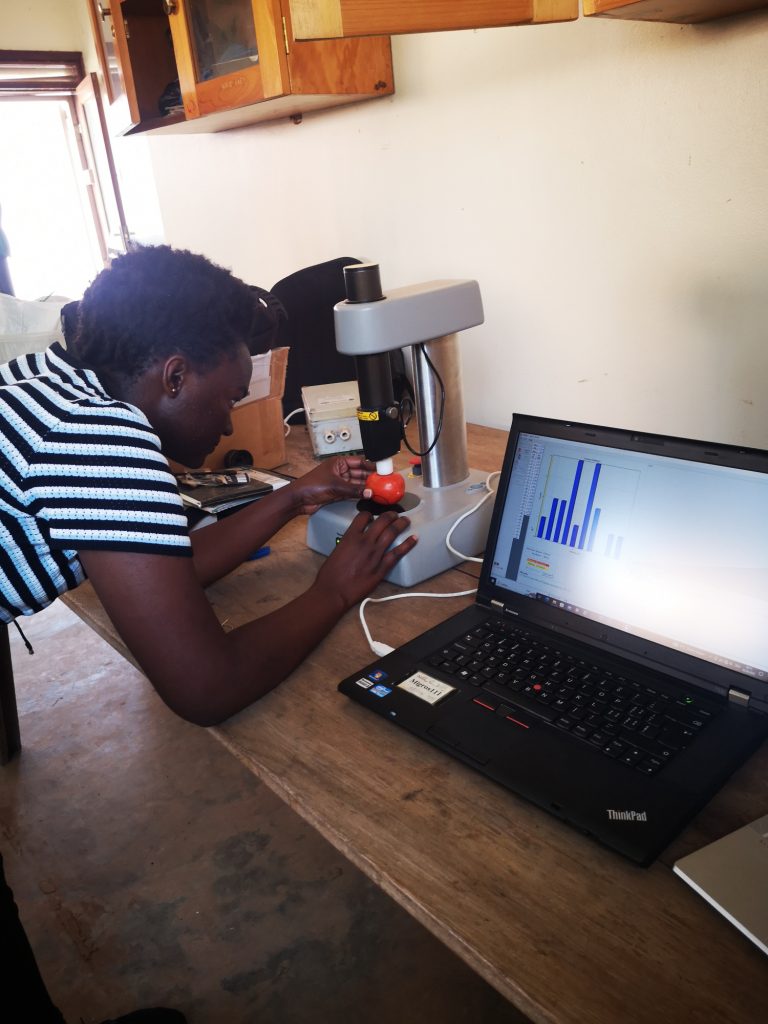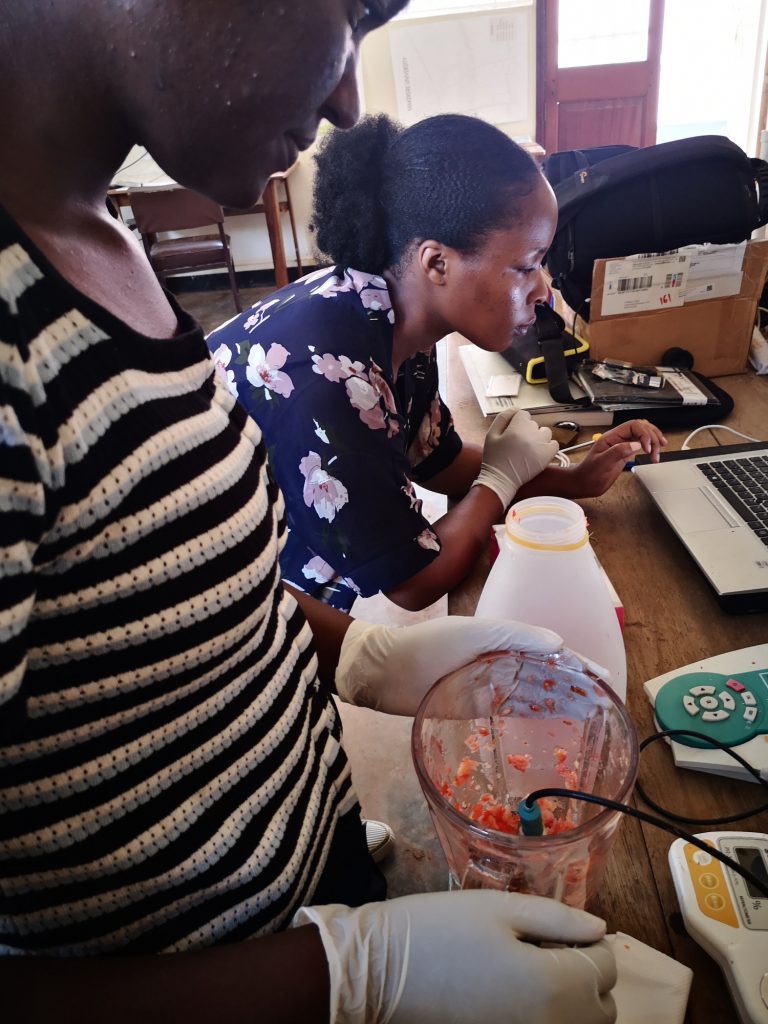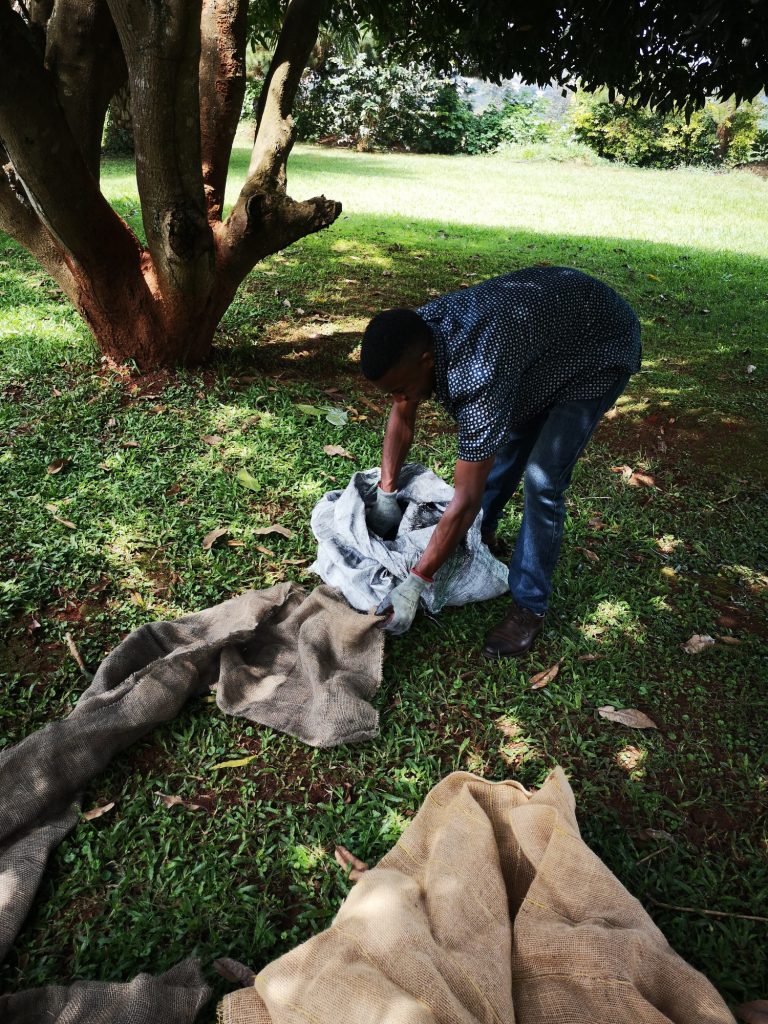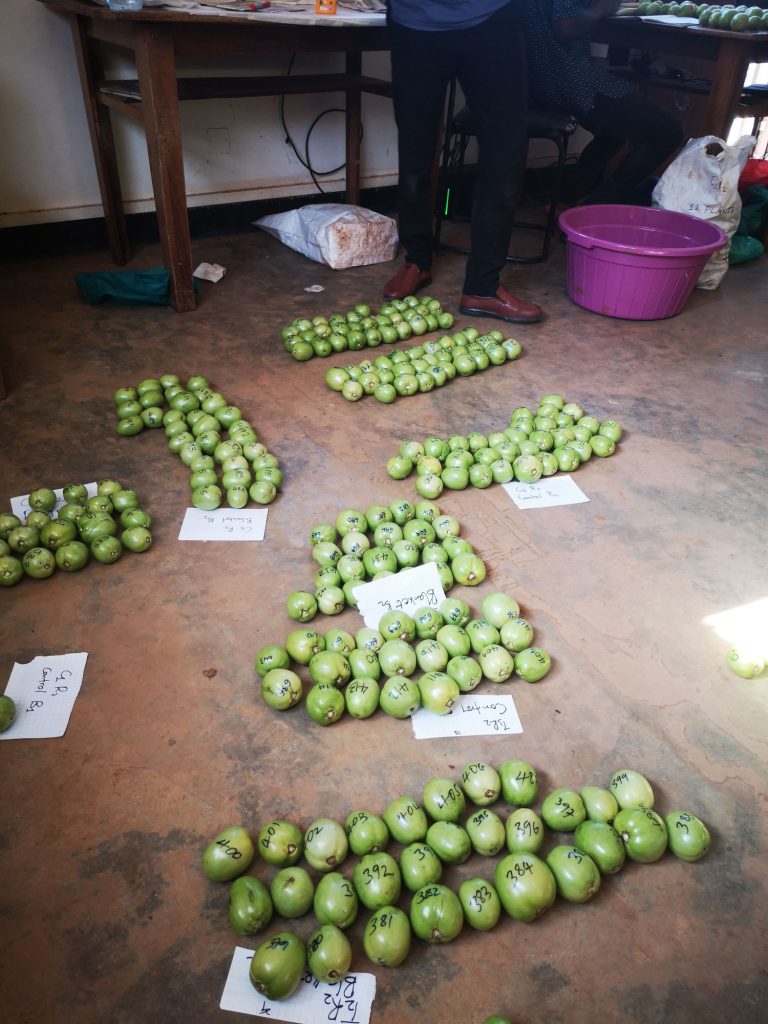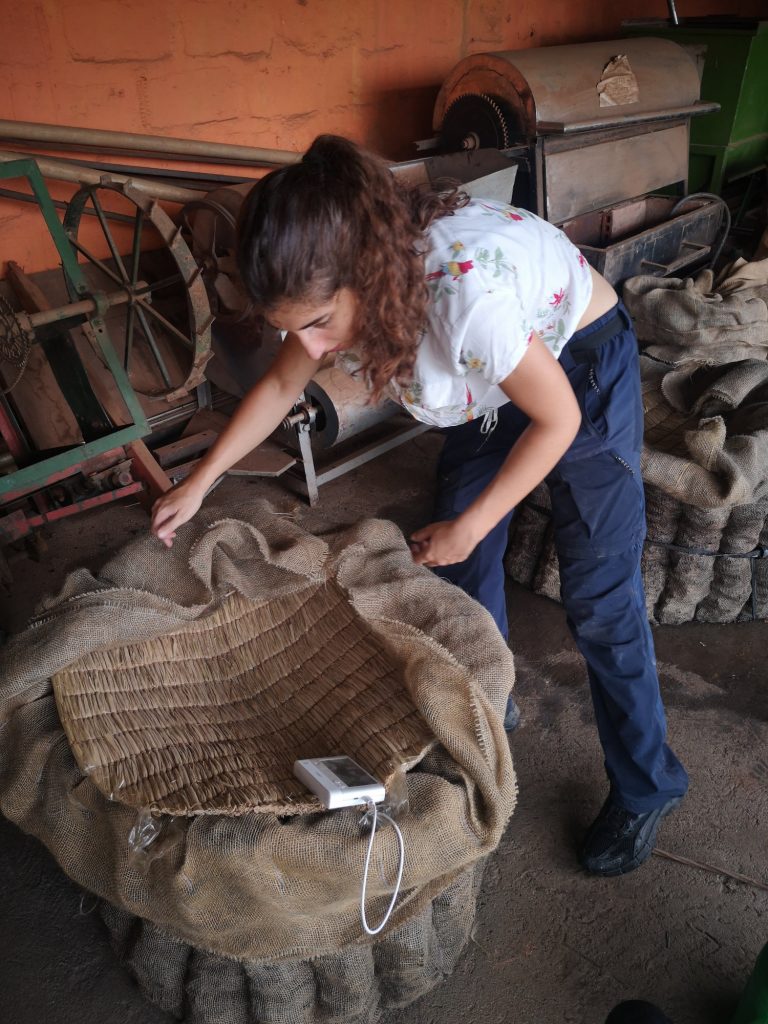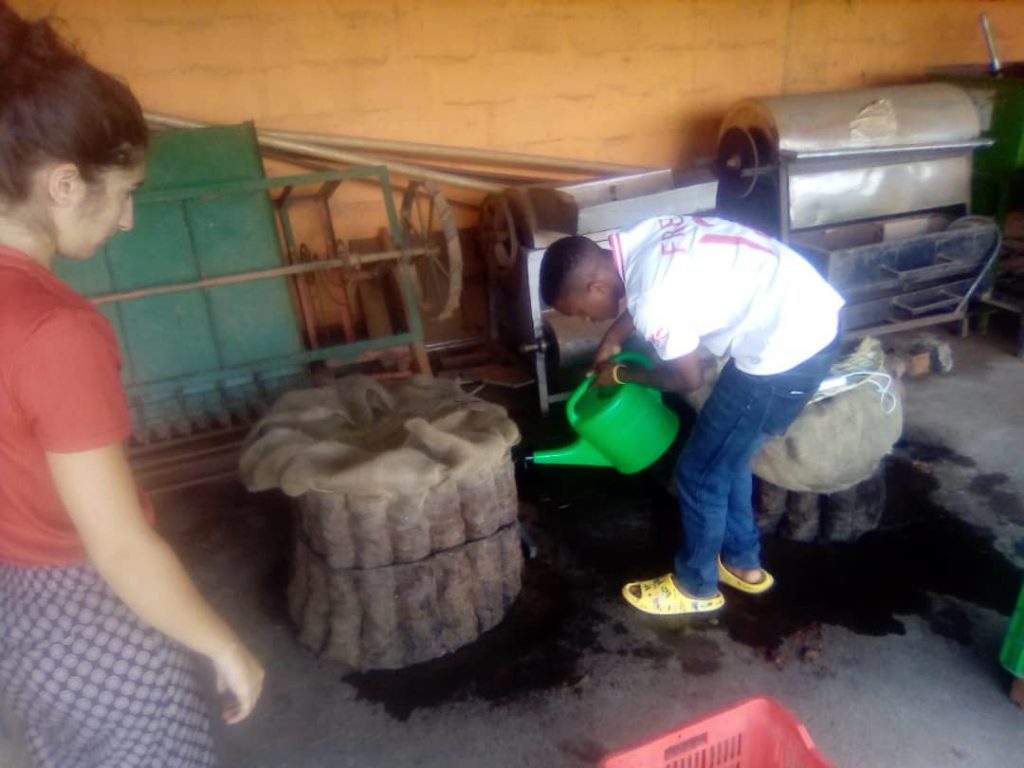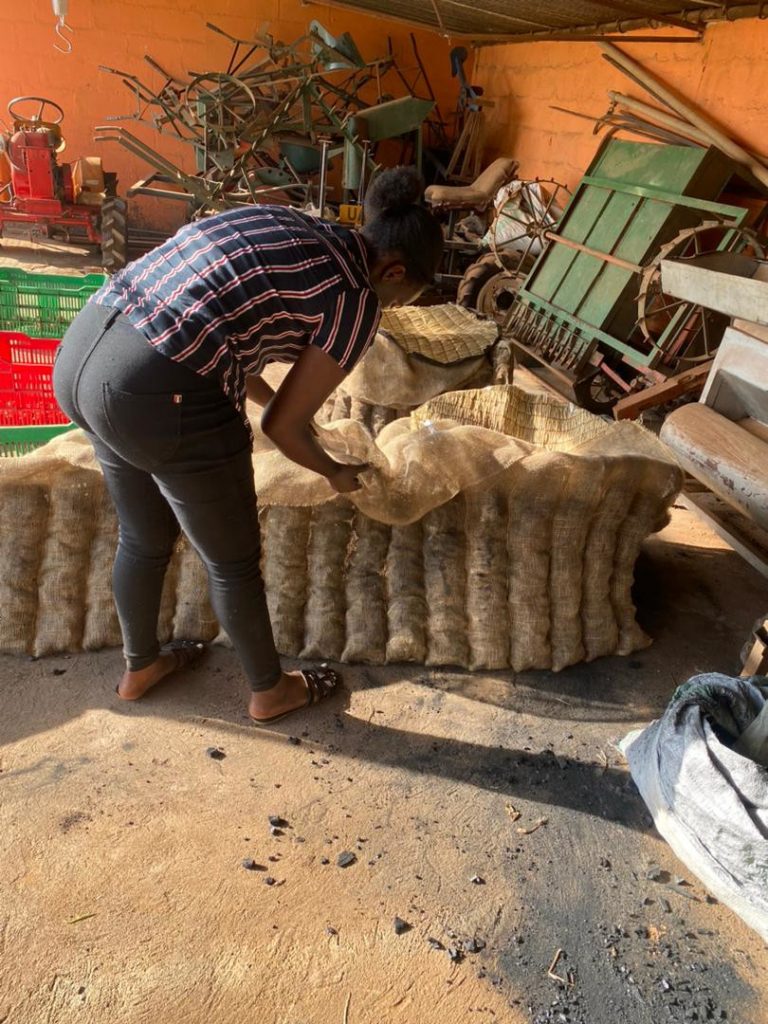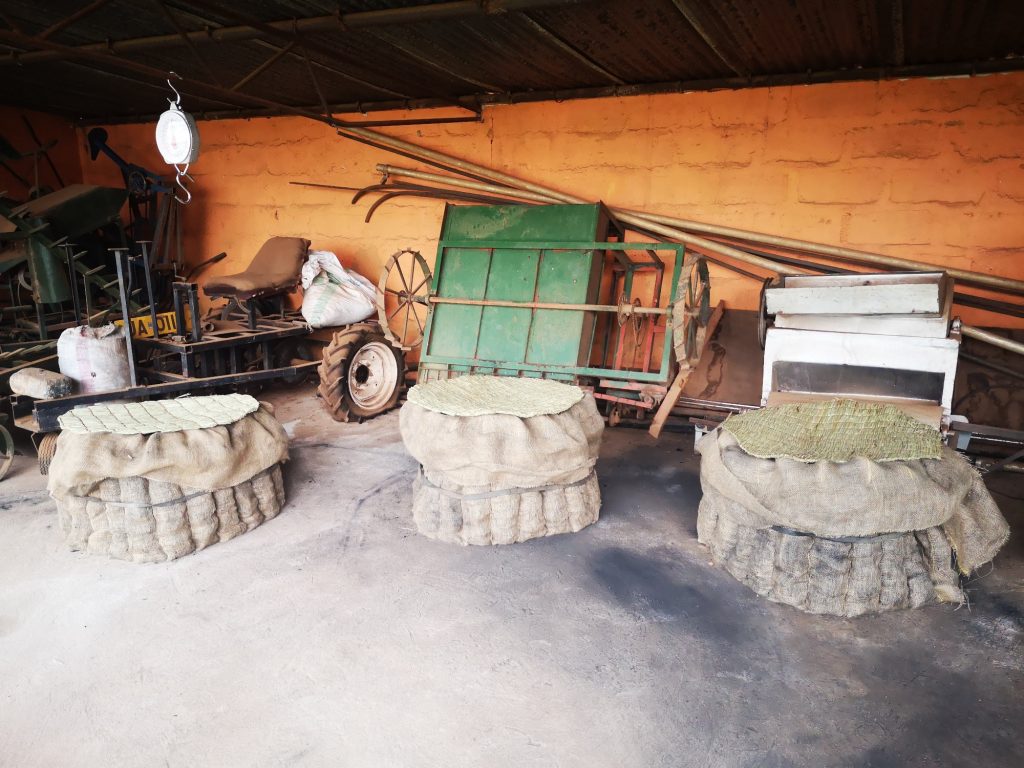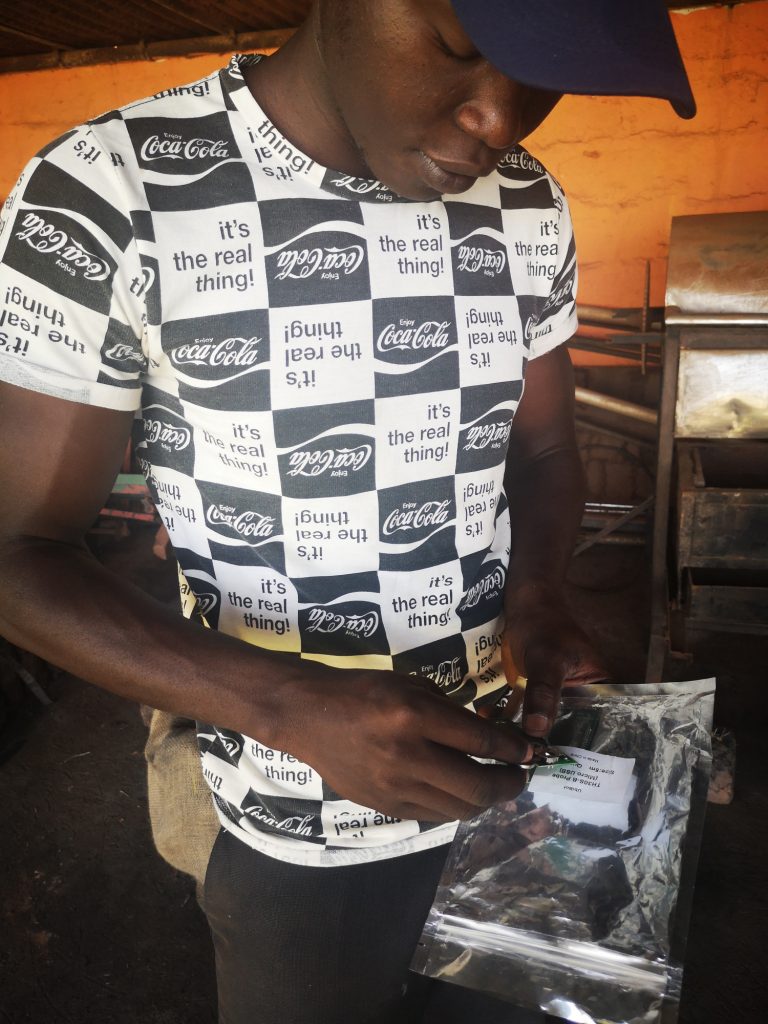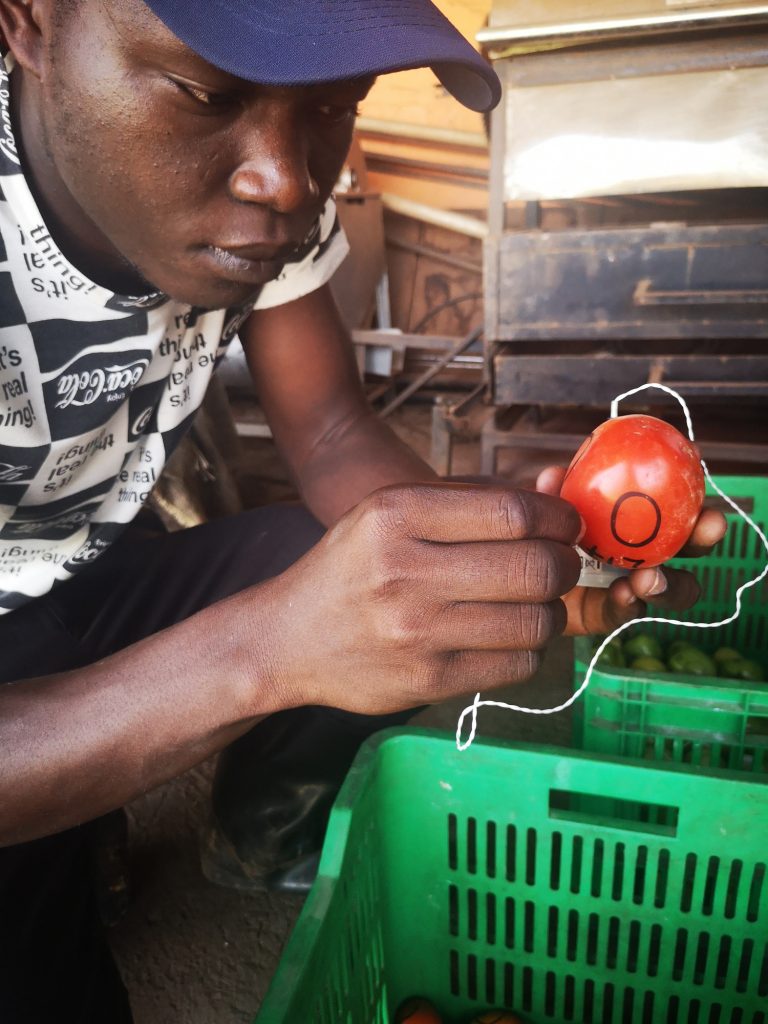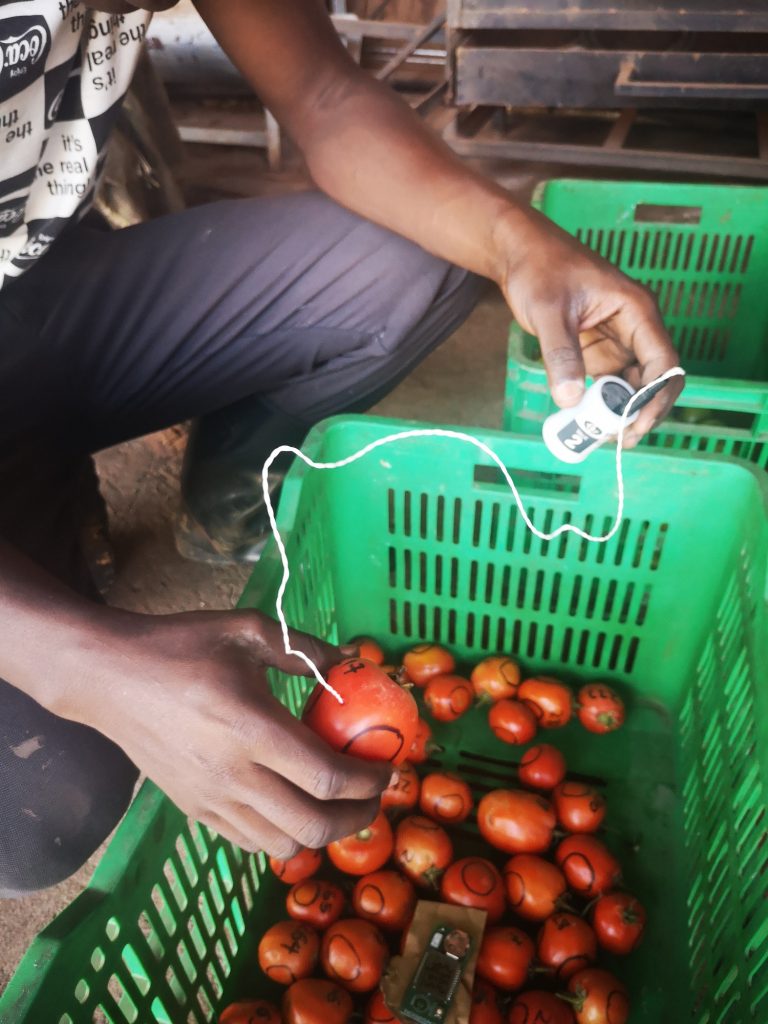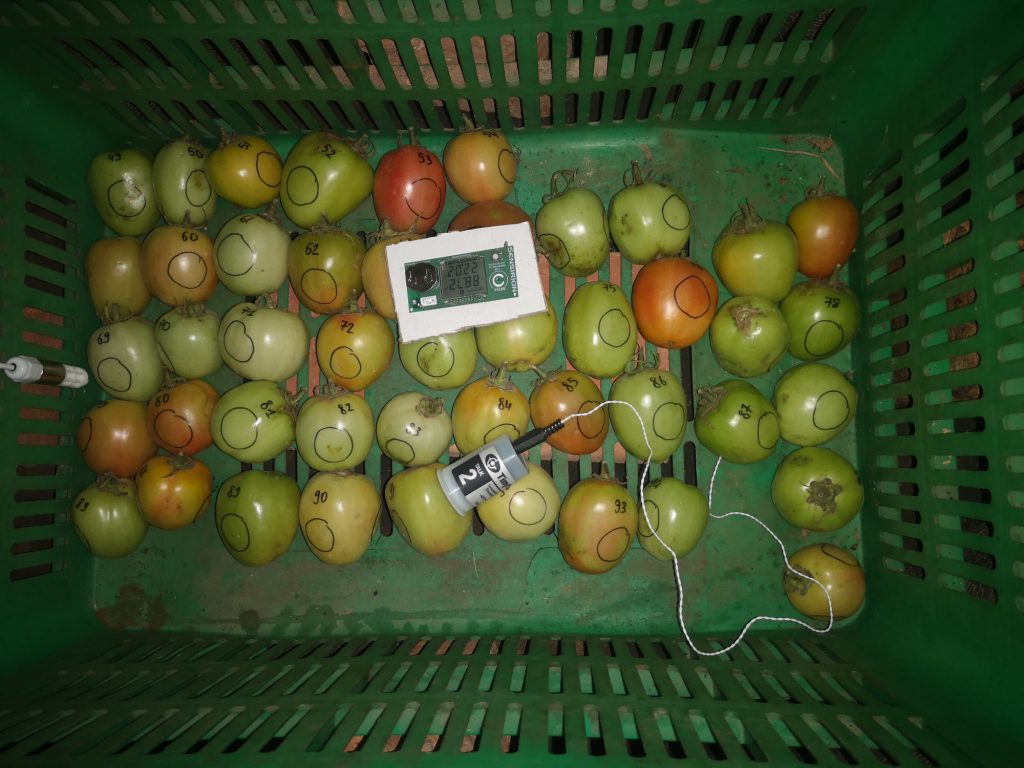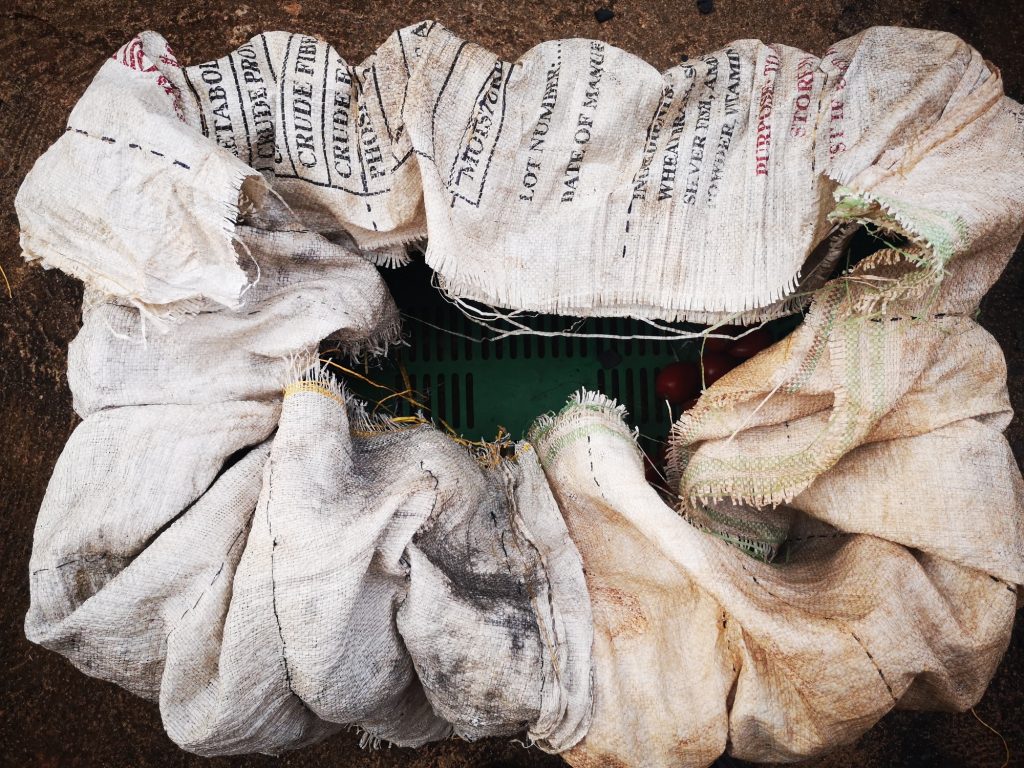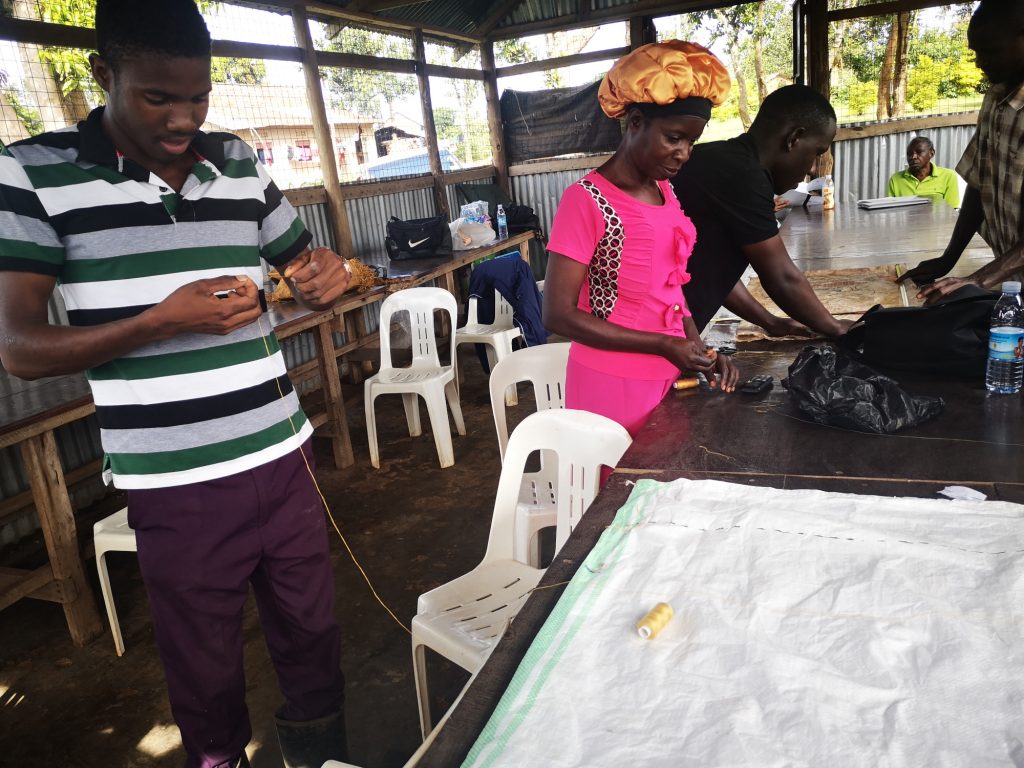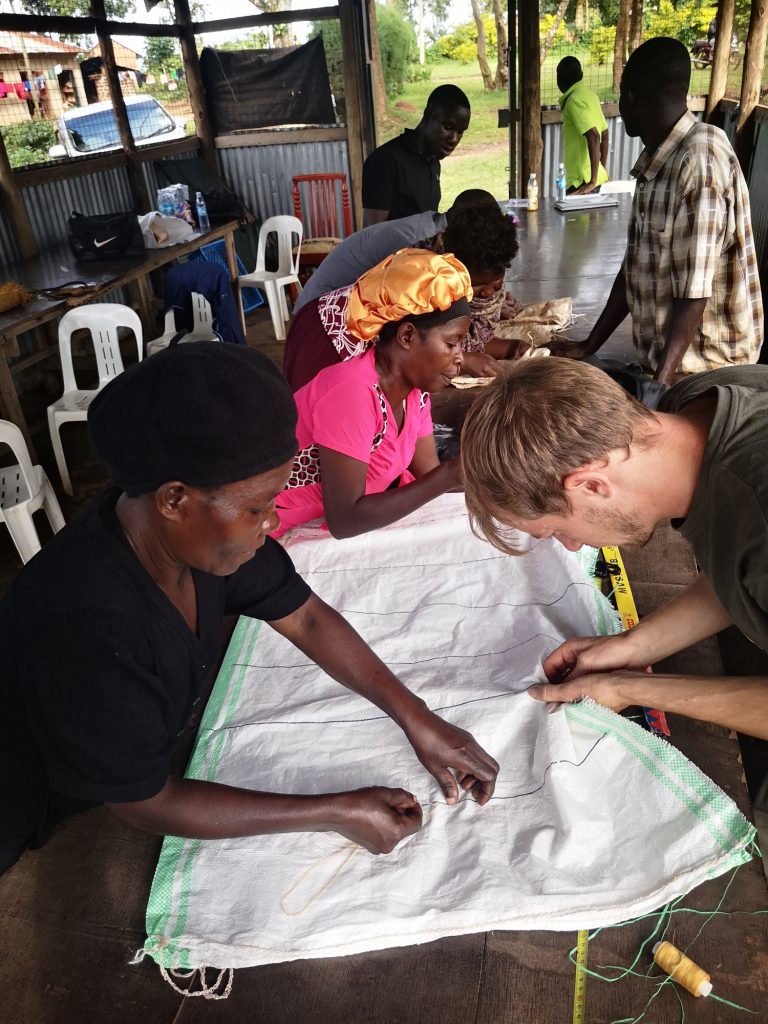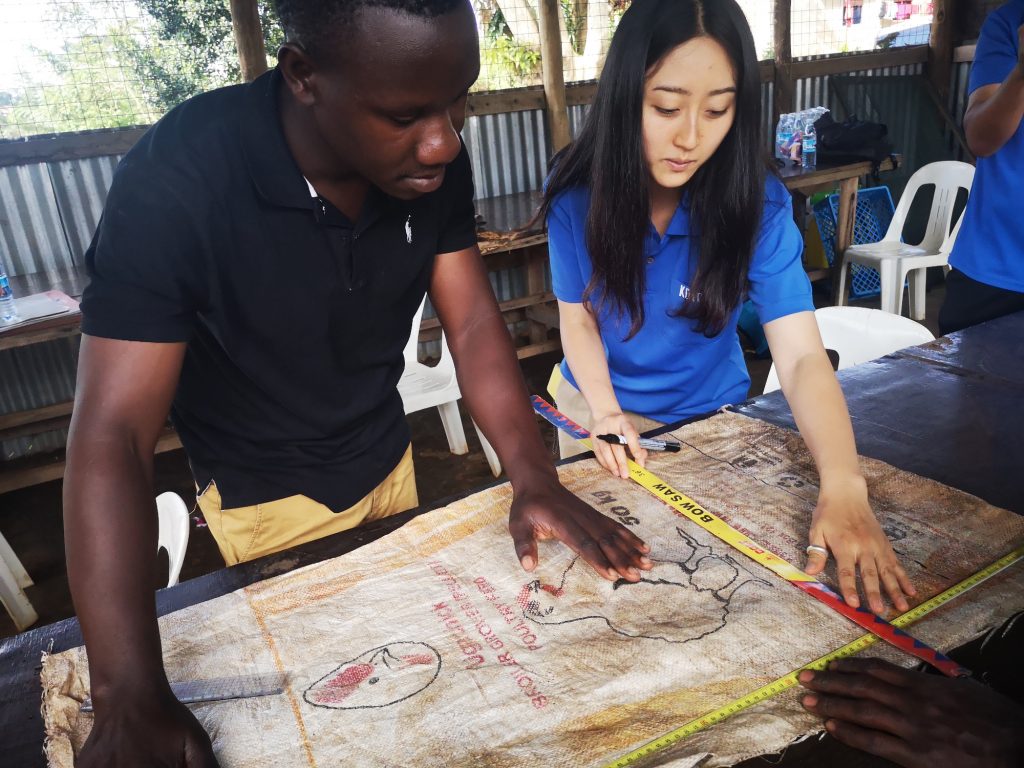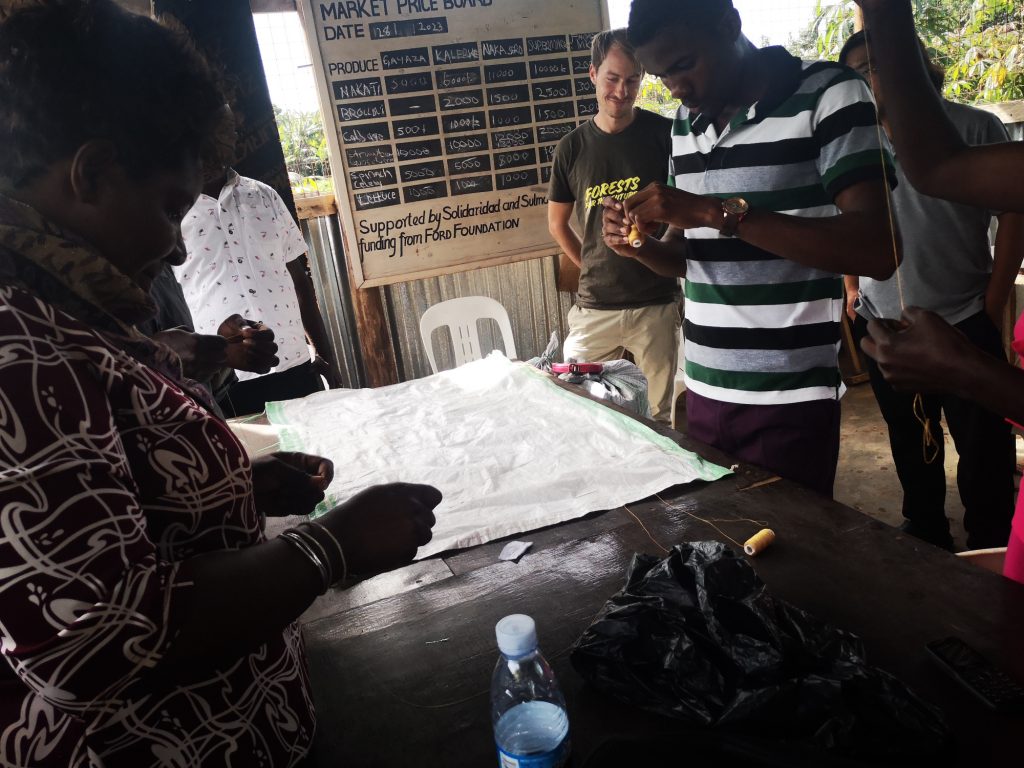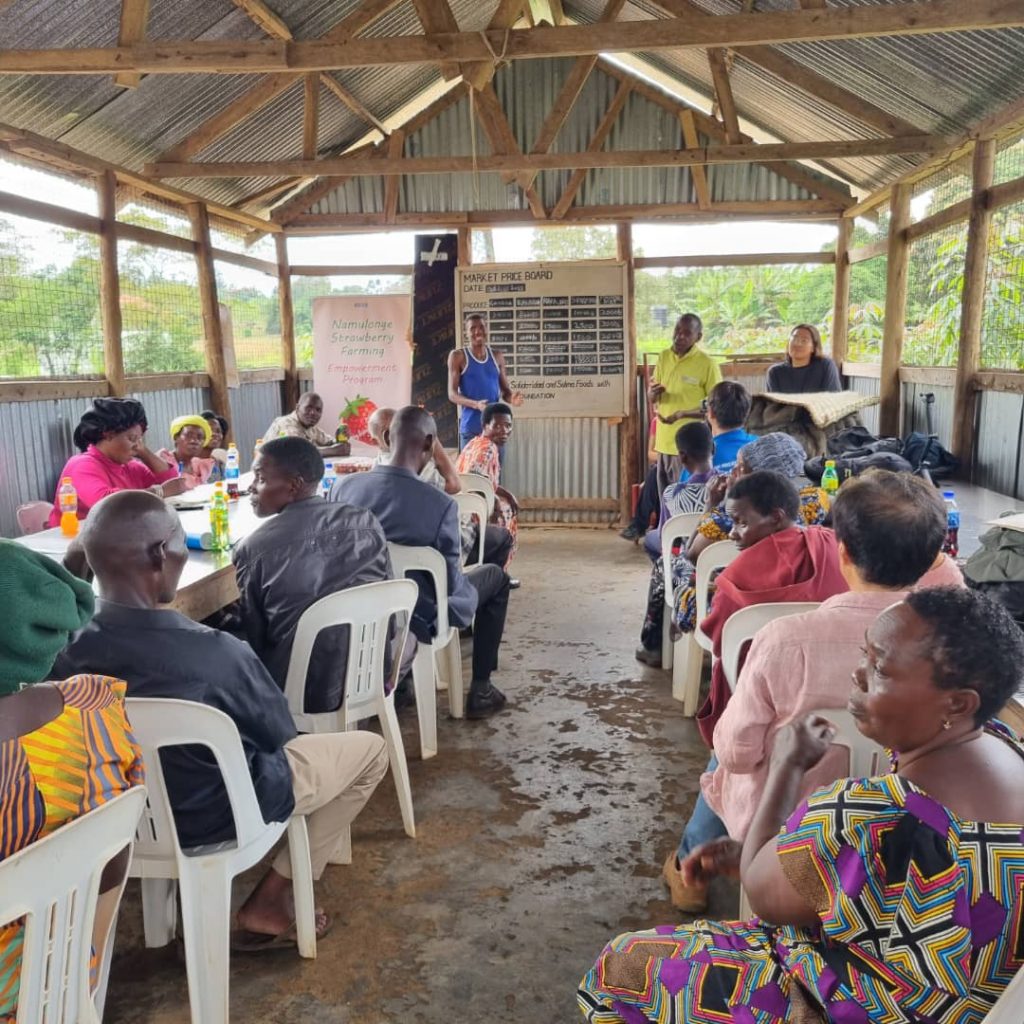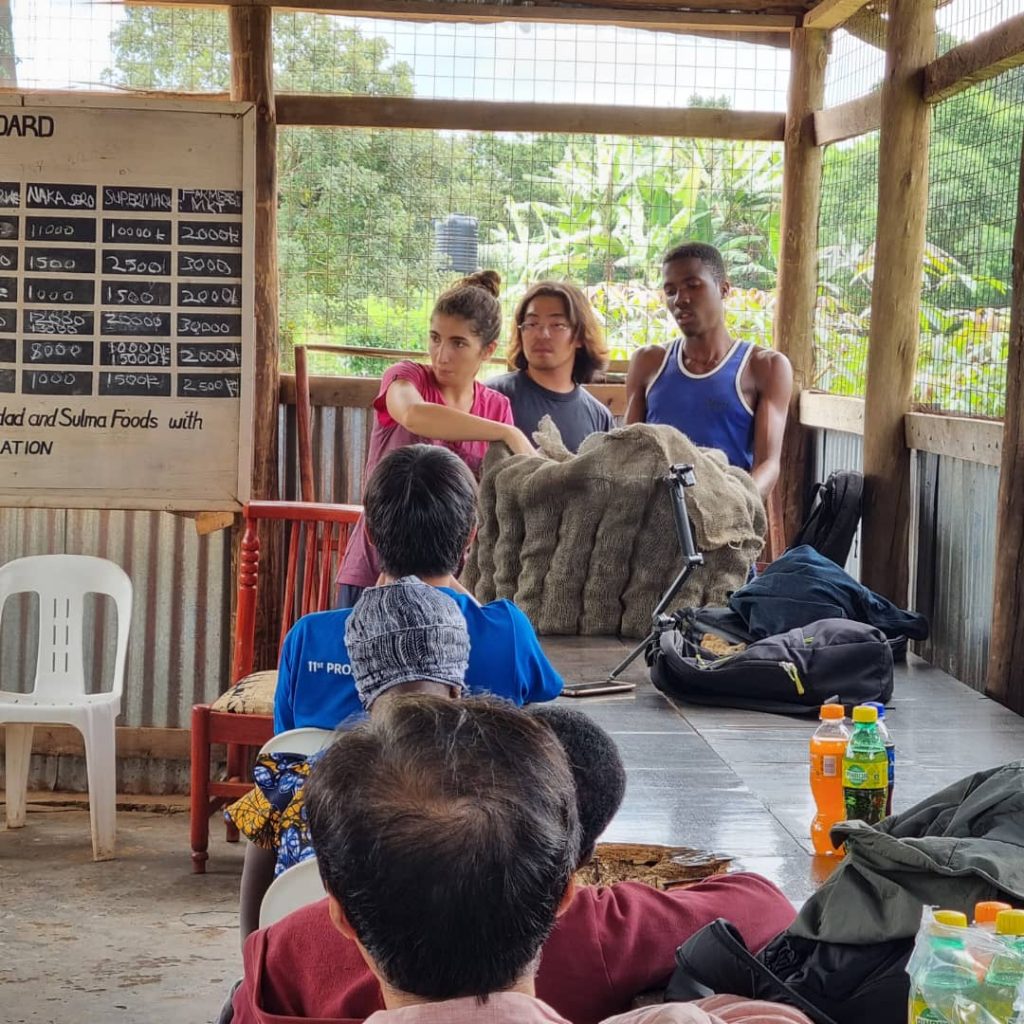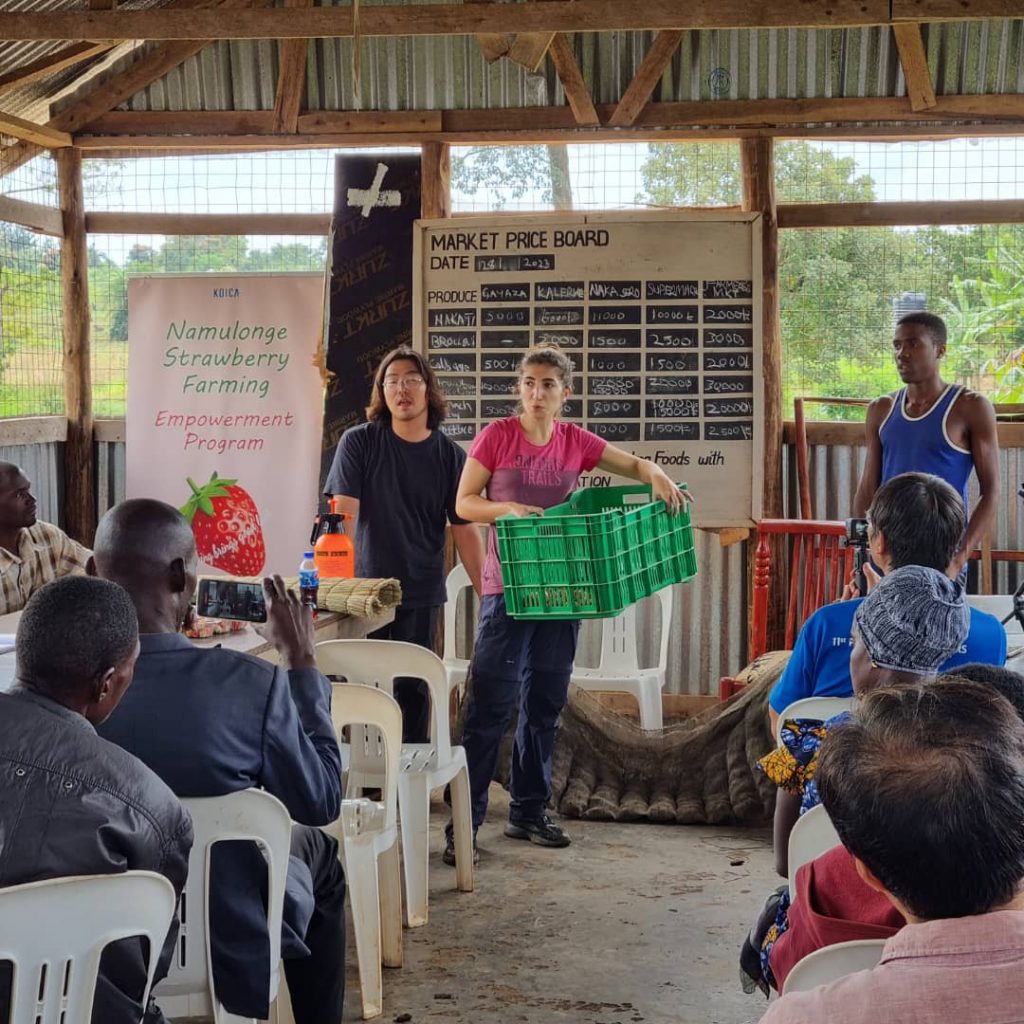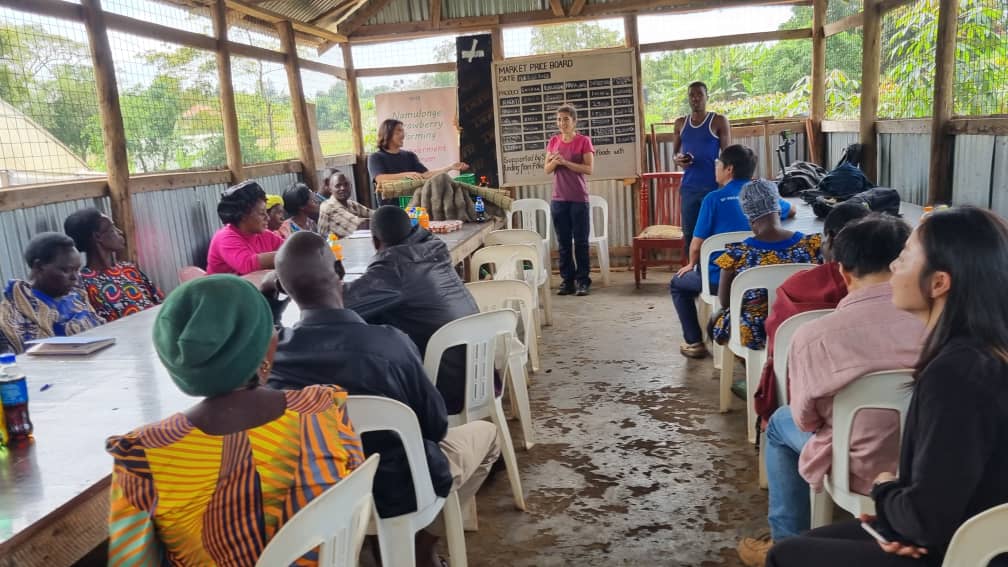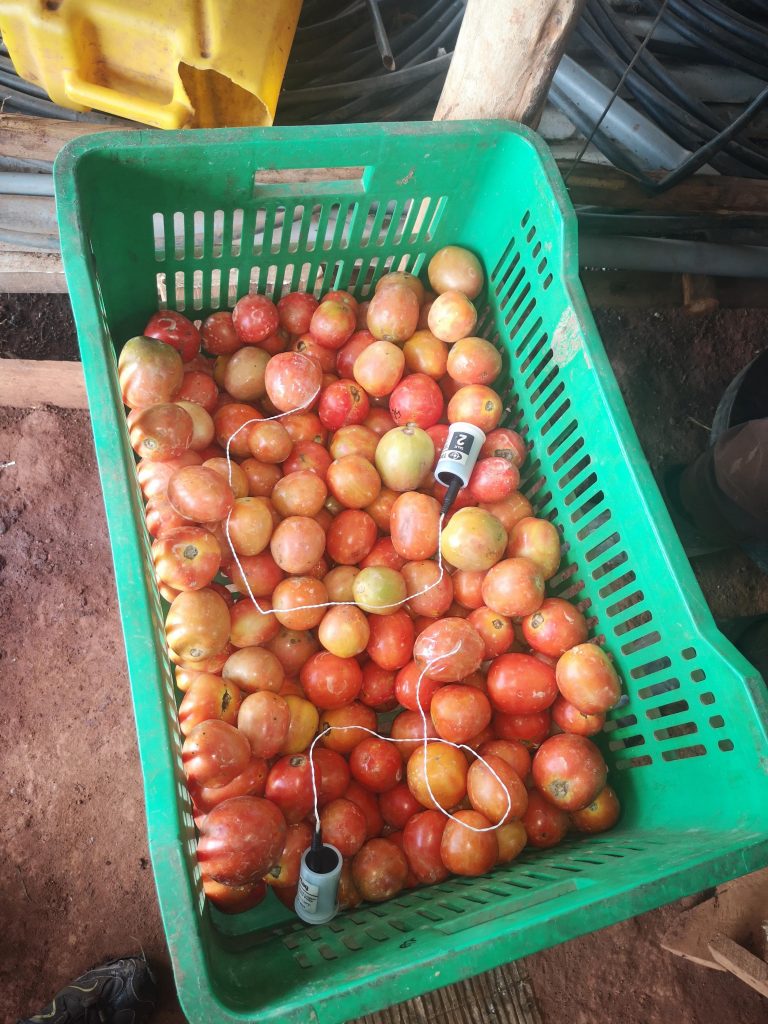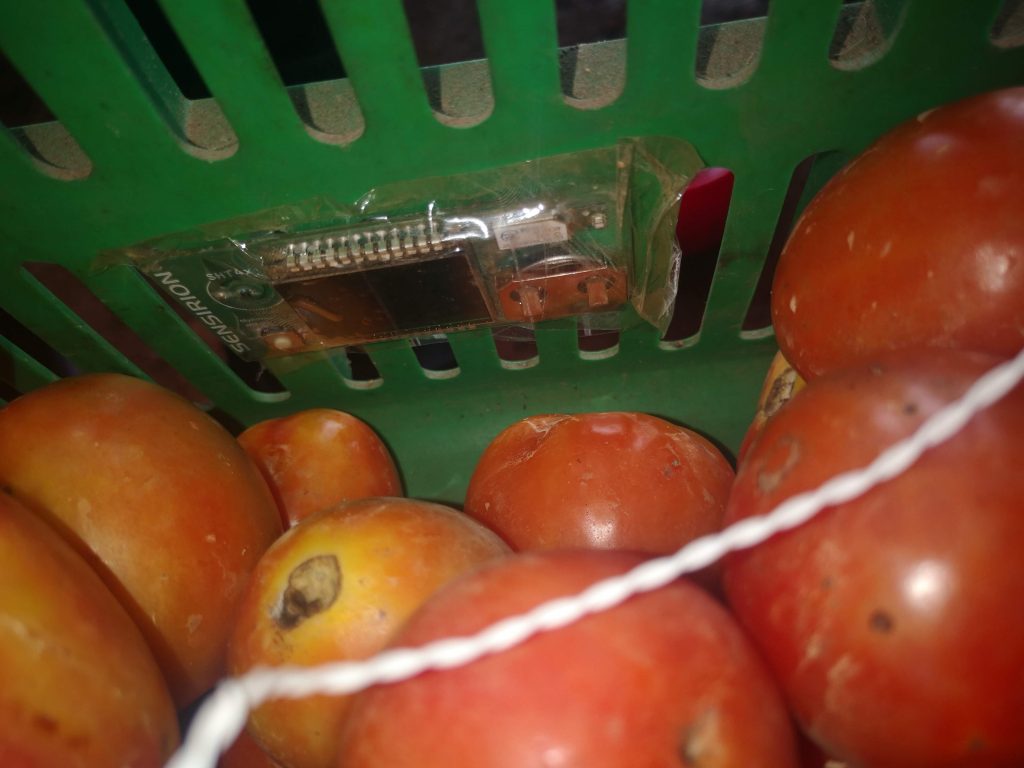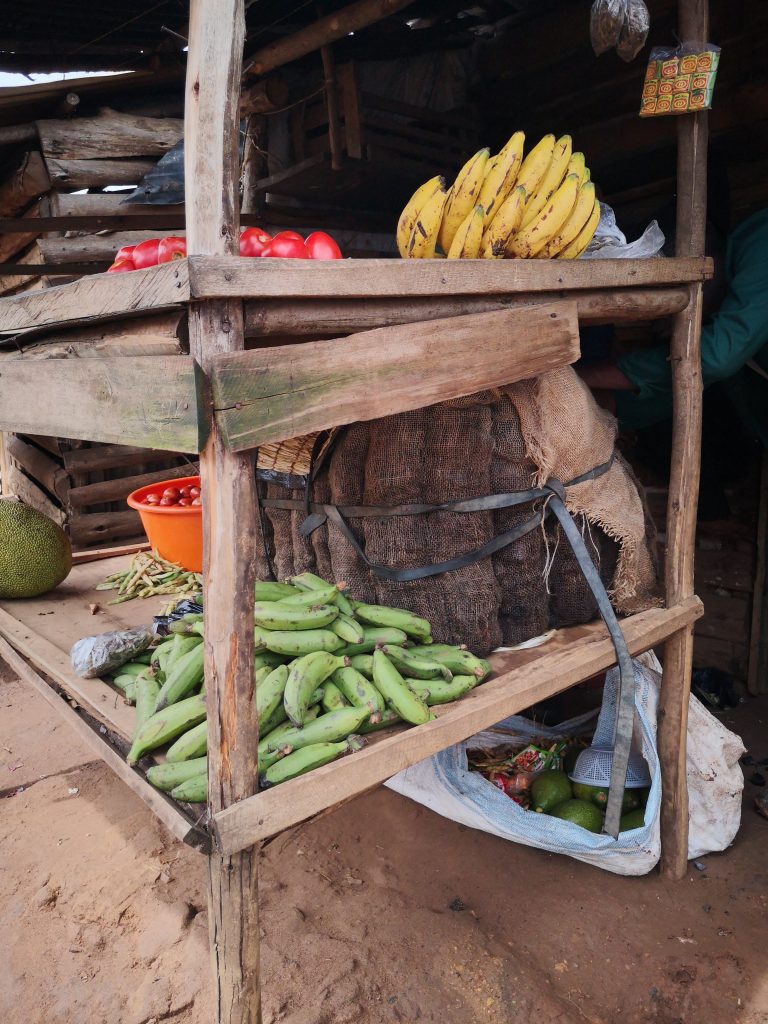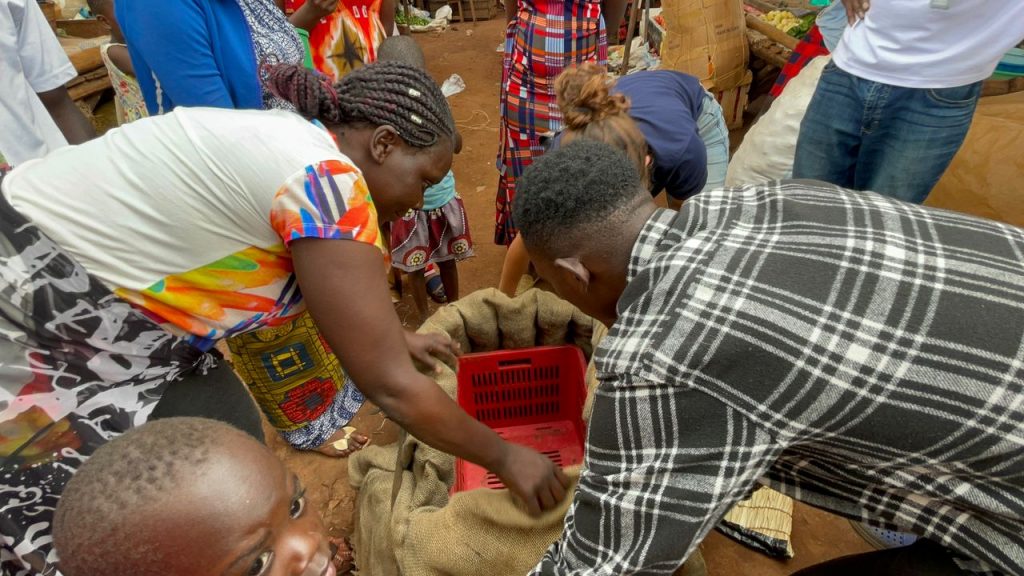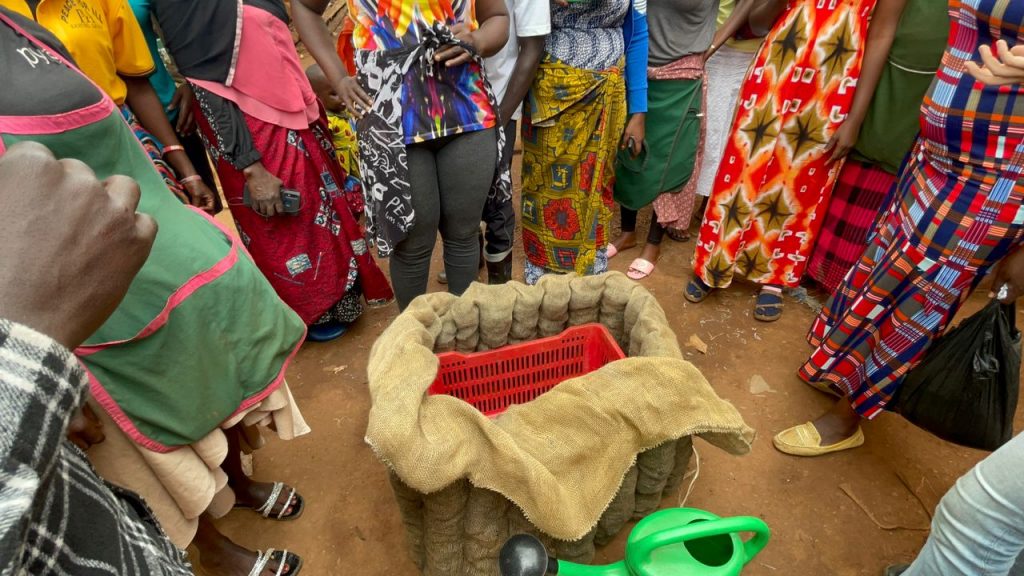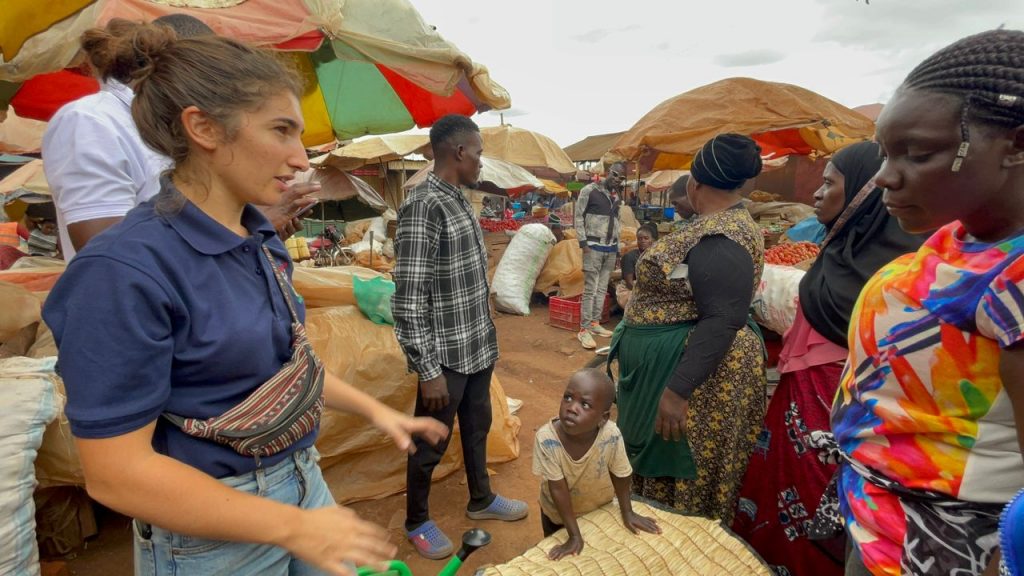Testing and Implementation of Passive Cooling Blankets in Uganda
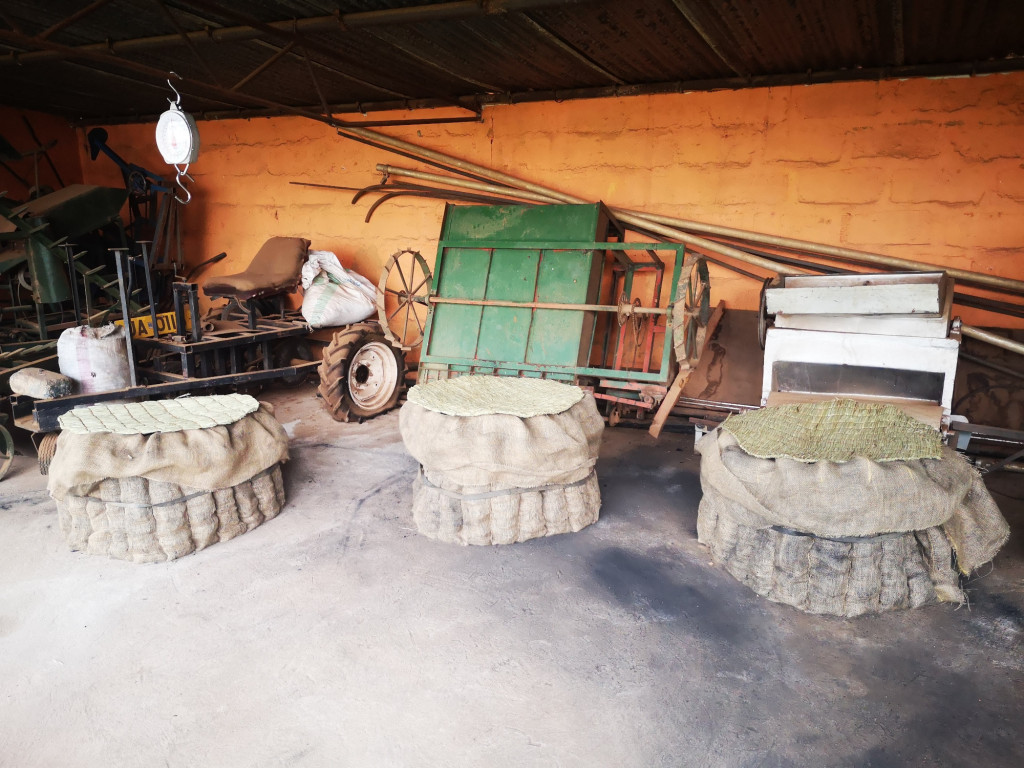
From August to November 2023, the FoodLAND partners Sofia Felicioni from Agroscope has been working in some Ugandan locations, namely Muarik and Kabanyolo, conducting experiments for testing some passive cooling blankets to store local tomatoes with the aim of increasing their shelf life.
During this field trip, they first worked with the blanket Agroscope had developed. This passive cooling blanket is made of burlap and it has lateral pockets where charcoal is contained. The blanket is then wrapped around a plastic crate with fruits or vegetables inside. On top, is positioned a cover which in this case was made of leaves. Inside the blanket were located Bluetooth and WiFi sensors to check internal air temperature and relative humidity (RH). The internal temperature of a few tomatoes was checked as well. The scope was to compare the air temperature and humidity inside and outside the blanket and the internal temperature of the tomatoes stored inside the blanket and those stored outside. The blanket was periodically manually watered when the temperature was rising too much or a drop in RH was recorded by the sensors. The experiment was repeated 3 times using 3 blankets each time and testing the cooling effect on different ripening stages (green, breaker and red tomatoes). The experiment took place under a protected and gated shelter against animal attacks.
During the storage period, groups of tomatoes were removed following a schedule to measure quality parameters. The quality parameters measured were: weight, firmness (how hard or soft is the fruit when compressed), colour development, sugar content, and pH (acidity). The use of the blanket improves the storage of the tomatoes temperature-wise but also affects quality parameters, mainly weight, colour and firmness. While conducting the experiment I built a team of students who helped throughout my stay showing autonomy and engagement.
Tutorial to build a blanket from scratches
Thanks to cooperation with KOICA (Korea International Cooperation Agency) Sofia got in contact with a village of strawberry farmers. This village is unusual by Ugandan standards. Firstly it is very rare if not unique, to find strawberry cultivation in Uganda, furthermore, the farmers there are extremely organized and duties are equally divided showing a structured society within the village. As Sofia stated, she “had the pleasure of visiting the village and giving a “lecture” presenting the cooling blanket and how it worked. The event was very fruitful and a lot of interest was raised. Farmers also made me realize a few limiting factors hindering the spreading of the idea like the too-elevated price for burlap in Uganda.”
She decided consequently to organize a workshop with the same farmers to sew together a blanket from scratches, though instead of using burlap, we used plastic bags which are commonly employed to transport horticultural goods on motorcycles. The objective was accomplished, women especially felt empowered because more skilled than men at sewing. The farmers now have two blankets, one made of burlap which she brought from Switzerland and one made of plastic which they made themselves. They are going to use both at harvest and check which one works best for the strawberry.
From farm to fork – use of the blanket during transport and at the market
The blanket was tested also during transport and storage at the market. In the first case, the blanket was wrapped around a plastic crate containing tomatoes and mounted on a motorbike (known as boda boda). Temperature and humidity sensors were mounted inside and outside the blanket. Sensors were also inserted in a few tomatoes to monitor internal temperature. Two motorcycles were used in total, one with the blanket mounted on it while the other was transporting only the plastic crate. The transport covered a few km and I was following both boda boda driving a car. The transport ended in the village of Kabanyolo and the tomatoes were sold by two local ladies. One lady was keeping the tomatoes inside the blanket while the other lady had just the naked crate. Every day I was going to check the sensors and the aspect of the tomatoes. The lady who was using the blanket as a storage method had 2 additional days of selling.
“The blanket was also presented at the market to a group of women thanks to the cooperation with the Buule Foundation. I showed everything about the blanket and I answered all the questions. A woman who showed particular interest asked for a blanket to keep. I agreed as this could be a good opportunity to show to other workers at the market that the blanket is used by locals”, concluded Sofia.

